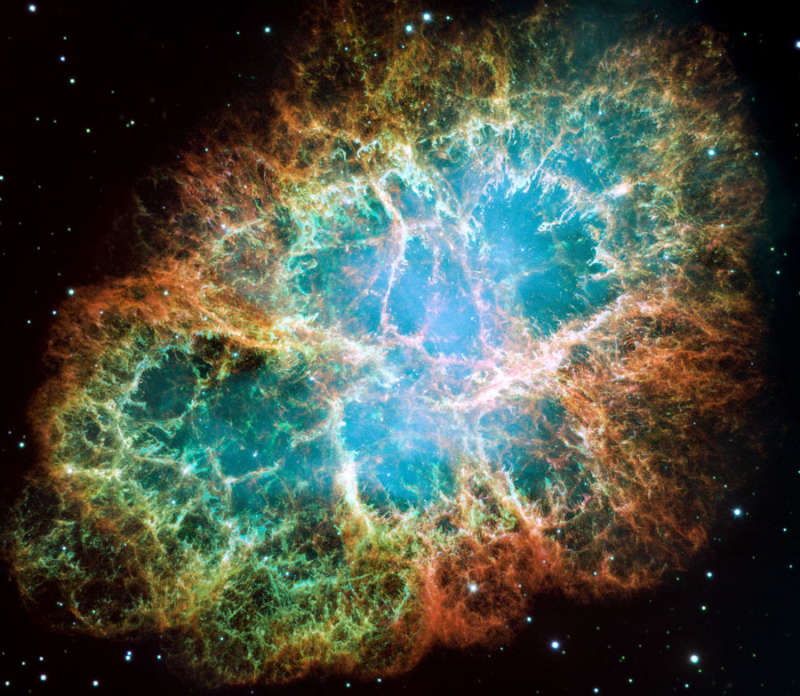Credit & Copyright: NASA,
ESA,
J. Hester, A. Loll (ASU);
Acknowledgement:
Davide De Martin (Skyfactory)
Explanation:
This is the mess that is left when a star explodes.
The Crab Nebula, the result of a supernova seen in
1054 AD, is filled with
mysterious filaments.
The filaments are not only
tremendously complex, but appear to have
higher speed than expected from a free explosion.
The above image,
taken by the Hubble Space Telescope,
is presented in three colors chosen for scientific interest.
The Crab Nebula spans about 10 light-years.
In the nebula's very center lies a
pulsar: a
neutron star as massive as the
Sun
but with only the size of a
small town.
The Crab Pulsar rotates about 30 times each second.
Best Short Astronomy Videos:
APOD editor to speak in New York City on Friday, January 6
1999 2000 2001 2002 2003 2004 2005 2006 2007 2008 2009 2010 2011 2012 2013 2014 2015 2016 2017 2018 2019 2020 2021 2022 2023 2024 2025 |
Январь Февраль Март Апрель Май Июнь Июль Август Сентябрь Октябрь Ноябрь Декабрь |
NASA Web Site Statements, Warnings, and Disclaimers
NASA Official: Jay Norris. Specific rights apply.
A service of: LHEA at NASA / GSFC
& Michigan Tech. U.
|
Публикации с ключевыми словами:
M 1 - Крабовидная туманность
Публикации со словами: M 1 - Крабовидная туманность | |
См. также:
Все публикации на ту же тему >> | |
